BestReviews is reader-supported and may earn an affiliate commission. Details

This edger is designed to cut through roots and most anything else that might give you a problem while edging.
This edger is designed to cut through roots and most anything else that might give you a problem while edging.
This is a rugged tool that features a V-shaped cutting tip along with jagged teeth that can saw through roots. It has an extended shaft to give taller gardeners the extra leverage they need. The low-maintenance blade only requires regular cleaning to have optimum performance.
While there are rare reports of the blade cracking, this model comes with a lifetime guarantee for peace of mind.
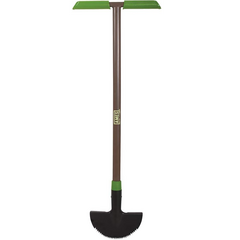
This reasonably-priced edger is suitable for small to mid-level jobs.
This reasonably-priced edger is suitable for small to mid-level jobs.
Features an arched blade that makes it possible to cut curved or straight lines around. Serrated edge is built for working in hard soil. Decent price point.
Some types of thick, tough grass challenge it. A few users question its longevity with heavy-duty use.
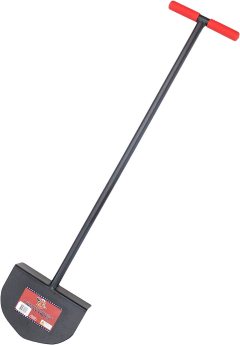
Quirks aside, this manual lawn edger is priced to suit the budget-minded shopper, yet is strong enough to tackle most small to medium edging tasks.
Quirks aside, this manual lawn edger is priced to suit the budget-minded shopper, yet is strong enough to tackle most small to medium edging tasks.
Has a flat, pointed blade made of heavy-gauge steel. Structure is uncomplicated, making the tool very easy to use and perfect for digging trenches around landscaping, sidewalks, and garden beds. Most affordable option on our shortlist.
Doesn't work well in very hard or clay-like soil. Has been known to break with repeated use. Customer service could be more attentive.

A basic but solid edger that performs well, and is available at a reasonable price.
A basic but solid edger that performs well, and is available at a reasonable price.
This model is a great option for the average homeowner's edging needs. The steel blade isn’t sharp but it does cut cleanly through dense turf when the foot platform is properly utilized. The long shaft allows you to work without straining your lower back.
The weak design element in this model is the plastic handle, which is the area most prone to break.
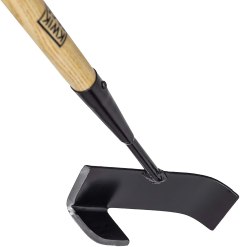
This multipurpose tool can be used to refine your garden’s edge, cut through roots, and cultivate the soil.
This multipurpose tool can be used to refine your garden’s edge, cut through roots, and cultivate the soil.
The Kwik Edge does not function as a traditional edger, it operates in a smooth motion that is easier on your back. Besides keeping your edges crisp, repeated use of this tool will condition the soil.
While this tool is excellent for maintaining an edge, the manufacturer reminds it was not designed to create one.
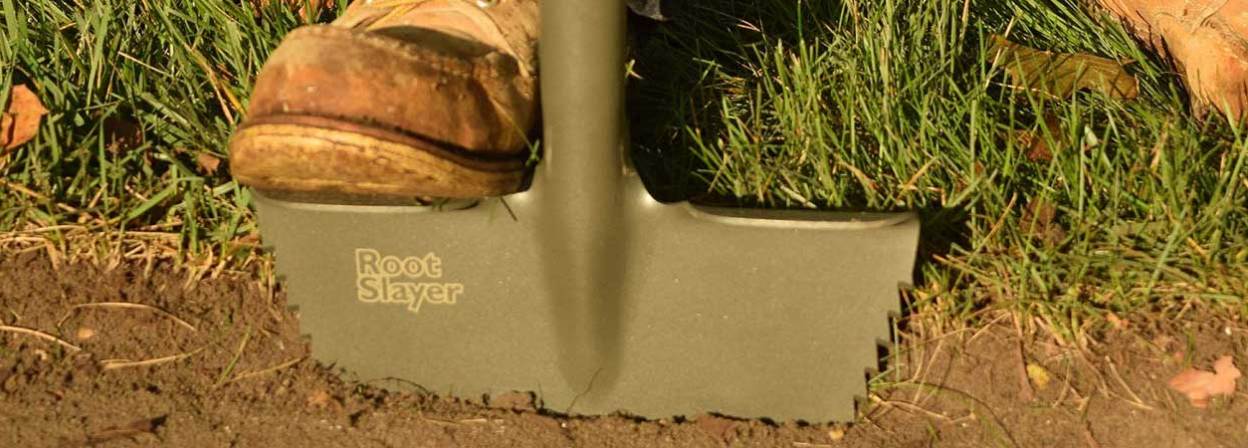
We recommend these products based on an intensive research process that's designed to cut through the noise and find the top products in this space. Guided by experts, we spend hours looking into the factors that matter, to bring you these selections.
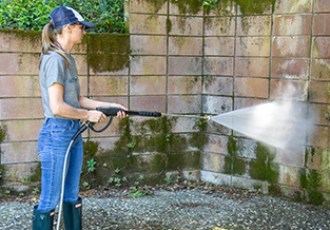
If you want your landscaping to turn a few heads, you can't just mow and trim: you also need to edge. Edging creates a barrier that stops grass and weeds from encroaching on your garden, walkways, and driveways. A properly edged walkway or garden adds a crisp and pristine look to your yard that makes your home stand out.
If you are interested in getting the most for your money, a manual lawn edger is the way to go. This eco-friendly tool requires little maintenance and will provide many years of reliable service. The best models will not only be dependable, but they will also feature an ergonomic design that allows you to work efficiently without fatigue. While you're choosing, don’t forget to check out the quality of the blade, the length of the shaft, and the ergonomics of the handle.

Standard
Different edger tools exist for different situations. What we are calling a standard edger is any model that must be driven into the ground using your foot. These models look like shovels, but the blade is not rectangular. Instead, it is a crescent or V shape so it can easily slice into the soil. Also, the blade is flat because you will not be scooping up any dirt; you are simply cutting a line through the soil.
Since there are no moving parts, a standard manual yard edger is more durable than a rotary edger. It also costs less and is far more versatile because it can be used in any edging situation.
Rotary
A rotary edger is easy to distinguish from a standard edger because it has wheels. It features a blade that looks vaguely like a throwing star. Because the wheels need to be on a hard surface, you can only use this type of edger if you are edging along a solid surface such as a driveway or sidewalk. The wheels roll along the hard surface while the blade spins, slicing a thin line through the soil. Most rotary edgers also feature a guide that allows you to stay close against the surface you are edging.

There are three main parts to a standard manual lawn edger: the blade, shaft, and handle.
When shopping for a standard manual yard edger, the blade is the most important feature. A rust-resistant carbon steel blade can handle the toughest tasks. Some models are shaped like a crescent, while others may be more angular and resemble a broad "V." This shape allows you to easily rock the edger from side to side. Many edger blades feature a serrated edge, which may come in handy for sawing through thin roots as you work.
The blade of a manual lawn edger needs a lip along the top edge, as this is where your foot will apply the pressure needed to sink the blade into the soil. Also consider the width of the blade: the wider it is, the quicker you can work, but the tougher the edger will be to handle.
The shaft of a standard manual edger should be long enough that the handle is above your waist. This puts the ideal shaft at close to 40 inches long, depending on your height. The lower the handle is, the more strain you will be placing on your lower back. While having a lightweight model is nice, durability is more important than weight, as you won't be doing much lifting with this tool.
The handle or grip on a manual lawn edger should be comfortable to hold. Even though your feet are performing the toughest task, a padded grip helps prevent blisters and allows you to work longer before fatiguing.
There are two types of handles: T-shaped and O-shaped. Both are designed for the slight sideways rocking motion you need when edging. Many individuals prefer an O-shaped handle because it offers greater control in a wider variety of positions. Ultimately, however, your choice comes down to personal preference.
While the best tool is often the sharpest tool, read your owner's manual to learn how to sharpen your edger blade properly. If you make it too sharp, you might actually weaken the blade.
Safety glasses: 3M Safety Glasses
Even with a manual lawn edger, the risk of launching debris into your eye is present. The foam gasket around these comfortable anti-fog 3M Safety Glasses will also help protect your eyes from dust.
Work gloves: OZERO Leather Work Gloves
To safeguard your hands when edging, you need a durable pair of work gloves. These comfortable, wear-resistant gloves are designed for men and women and made of 100% genuine leather.
Work boots: Timberland PRO Steel-Toe Work Boots
Your feet can take a beating from repeatedly driving a blade into the dirt when edging. These rugged Timberland work boots are designed to protect feet from injury and fatigue so you can work trouble-free until you complete all of your edging chores.
Sunscreen: Neutrogena Ultra Sheer Broad Spectrum Sunscreen Lotion
Whenever you are outside, if your skin is exposed to the sun, it’s a good idea to wear sunscreen. Neutrogena's fast-absorbing dry-touch sunscreen has an SPF of 100+ for maximum protection.

Inexpensive: For $35 or less, you can find a manual edger with a basic design. Most likely, it will be a steel blade with a T-style handle. There's nothing wrong with the function of these models; they are just a little lacking when it comes to ergonomics.
Mid-range: For $35 to $55, manual lawn edgers may feature a blade that is manufactured with more durable (and more expensive) high-carbon steel. The design of the blade may be better suited for cutting through problem areas, and the edger may feature a circular handle so it is easier to work the tool in a side-to-side motion.
High-end: You are unlikely to find manual lawn edgers that cost over $55. When you enter this price range, the products are powered by electricity or gas.

A. While you won't need to edge your yard with every mowing, you should take that time to evaluate the situation. If your edging is starting to lose its crispness, it's time to edge again. If you work better by keeping a schedule, once each month is a good rule of thumb.
A. While gardening tools are designed to get dirty, it is unwise to let them stay dirty. Besides lasting longer and working more efficiently, cleaning your manual lawn edger has another important benefit. If you happen to dig through any diseased soil, washing your edger will help prevent its unintentional spread to other areas of your yard.
A. While some people advise filling a 5-gallon bucket with sand and adding about two-thirds of a quart of motor oil so you can scrub down your blades, there are drawbacks to this method. It's overly complicated, animals love sand (so you may find some surprises in your sand), and motor oil is not eco-friendly. Instead, after every use, give your manual yard edger a quick spray with the hose, wipe it off, and dry it with a clean rag.
Get emails you’ll love.
Learn about the products you’re wondering if you should buy and get advice on using your latest purchases.
